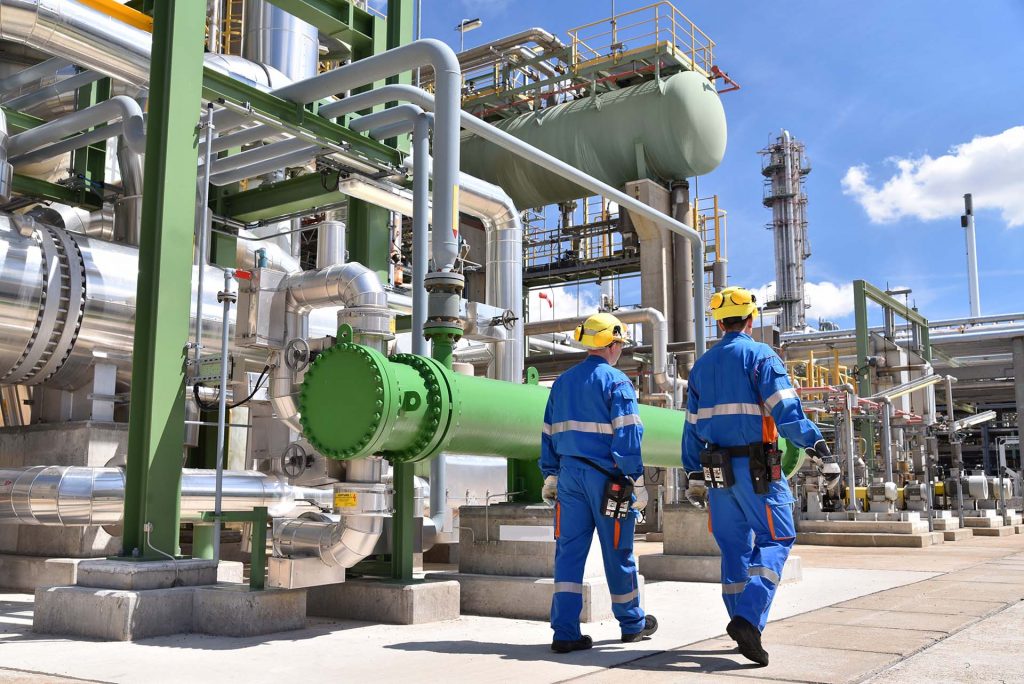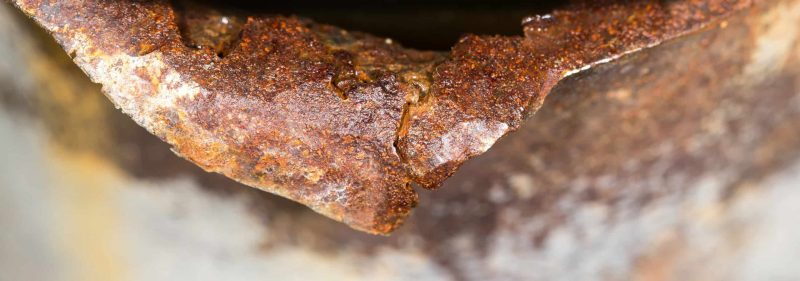Waste heat recovery systems for Flue gas and Exhaust air in Chemical Plants
Corrosion and fouling problems limit the recovery of more heat. With polymer heat exchangers you can recover additional heat and overcome these issues.
15% of energy is lost by flue gas or exhaust air leaving your stack
What is keeping you from recovering this waste heat?

Finding a robust heat exchange solution?
Finding a technically feasible solution to recover and re-use waste heat is a challenge.

Corrosive and fouling flue gases?
Your flue gas or dryer exhaust air is potentially corrosive or fouling at low temperatures.

The business case?
HeatMatrix engineers and manufacturers heat exchangers to recover waste heat in chemical plants
Save up to 10% energy on your thermal process
Recover waste heat - that is now lost - from flue gas or exhaust air
- Technical assessment by process engineers
- Heat recovery below the acid dew point
- 3 - 5 year payback time
- Turnkey project delivery
Your thermal process has waste heat recovery potential
Select your thermal process to find out how

Thermal processes
How waste heat recovery systems work in Chemical plants
Capture waste heat from flue gas
When hot flue gas and exhaust air leave the stack, they still contain a significant amount of energy. Our heat recovery system captures this heat from fired heaters, ovens, kilns, calciners, steam boilers, thermal oil heaters, dryers, CHP systems, RTO’s or incinerators in chemical in plants.
Preheat drying air, combustion air or water
Cold combustion air, drying air, process water, make-up water or boiler feed water are heated with the captured waste heat. This directly reduces the consumption of fossil fuels.
Our waste heat recovery systems for Chemical plants
Polymer Air Preheater
Warm up combustion air or drying air by extracting heat from flue gas or exhaust air. The air preheater is corrosion resistant, easy to maintain and to clean.
Stainless steel or Polymer Economiser
Warm up boiler feed water, make-up water or process water with waste heat from flue gases or exhaust air. The economiser is corrosion resistant and easy to maintain and to clean.
8% energy consumption reduction
Lubrizol is committed to environmentally responsible and sustainable solutions. To reduce their energy consumption on a drying process of CPVC, they wanted to recover heat from the exhaust air of the dryer.
Previously no heat was recovered from the hot drying air, because of the high hydrochloric acid content in it. When cooled down, through the water and acid dew point, hydrochloric acid is formed and corrosion occurs.
A HeatMatrix polymer Air Preheater was selected, because of its ability to handle corrosive exhaust air. Incoming cold air is heated from 10 to 56 °C, resulting in an energy saving of 170 kW. Corrosion free heat recovery is achieved.
Your path to lower CO2 emissions, energy consumption and costs

Technical assessment
Our process engineers assess technical feasibility of additional heat recovery on your process. The potential reduction in CO2 emissions and energy costs is determined.
Heat exchanger design and Business Case
A proposal shows all technical details and an economic assessment with payback time. You have everything you need for approval to start a feasibility study.
Feasibility study
FAQ's
How to reduce the energy consumption in a Chemical Plant?
In a chemical plant, a number of thermal processes are in operation, such as fired heaters, steam boilers, thermal oil heaters, dryers, ovens and others. On these thermal processes high grade heat is lost through the stack via hot flue gas. This can be as much as 15% of the used primary energy. By recovering the heat from flue gas to preheat combustion or drying air, a significant reduction in energy and CO2 emissions can be achieved. Alternatively, the waste heat can be used to warm up boiler feed or process water.
Payback time waste heat recovery systems in a Chemical plant?
Making the thermal processes more efficient reduces fuel consumption and therefore lowers fuel costs. In addition, making the heat recovery resistant to corrosion enables a chemical plant operator to recover more heat when fuels that contain sulphur are being used like oil, coal and biogas. Clients have improved their efficiency by 5 to 10% and achieved payback times of 3 to 5 years. Request a free Technical Assessment to get insight in your saving opportunities.
Technical assessment of waste heat recovery in your Chemical plant
- Analysis of your thermal proces
- Minimal input data required
- Business case on your savings potential

FAQ's
How to reduce the energy consumption in Chemical plants?
In a chemical plant, a number of thermal processes are in operation, such as fired heaters, steam boilers, thermal oil heaters, dryers, ovens and others. On these thermal processes high grade heat is lost through the stack via hot flue gas. This can be as much as 15% of the used primary energy. By recovering the heat from flue gas to preheat combustion or drying air, a significant reduction in energy and CO2 emissions can be achieved. Alternatively, the waste heat can be used to warm up boiler feed or process water.
Payback time of waste heat recovery systems in a Chemical plant?
Making the thermal processes more efficient reduces fuel consumption and therefore lowers fuel costs. In addition, making the heat recovery resistant to corrosion enables a chemical plant operator to recover more heat when fuels that contain sulphur are being used like oil, coal and biogas. Clients have improved their efficiency by 5 to 10% and achieved payback times of 3 to 5 years. Request a free Technical Assessment to get insight in your saving opportunities.
